Key takeaways:
- Data integrity is essential for reliable decision-making and builds user trust, especially in sensitive fields like healthcare.
- Implementing validation checks, regular backups, and consistent audits are key practices for maintaining data integrity.
- Using database management systems and version control enhances data consistency and facilitates collaboration among team members.
- Fostering a culture of accountability and thorough documentation helps overcome challenges related to data integrity in projects.
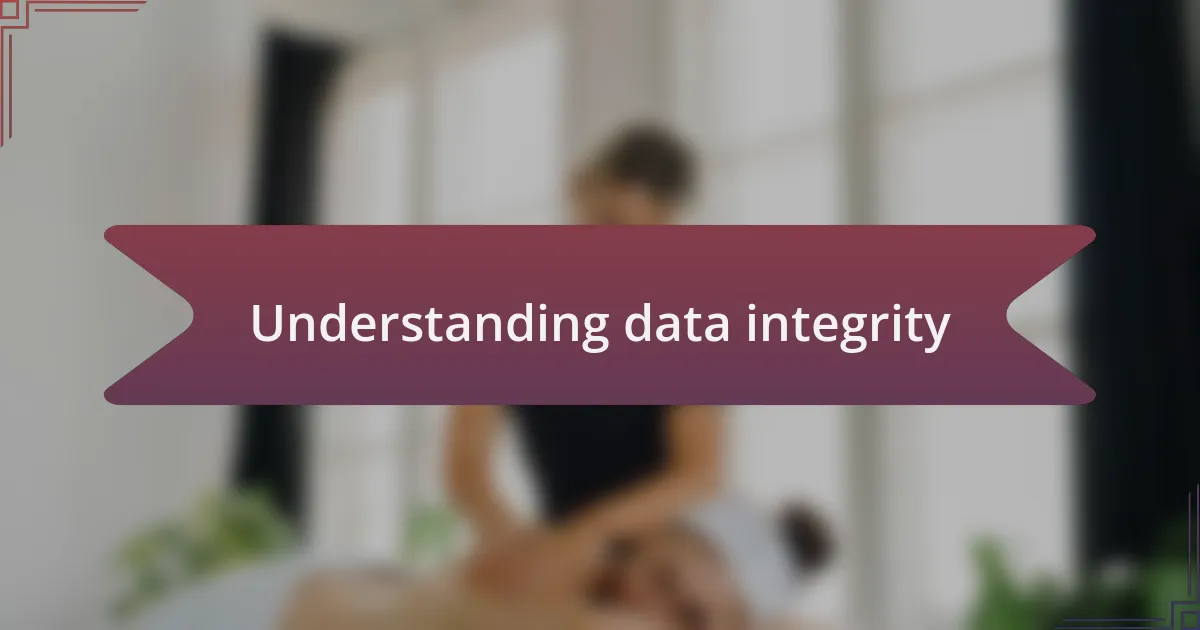
Understanding data integrity
Data integrity refers to the accuracy, consistency, and reliability of data throughout its lifecycle. I remember when I first encountered a data integrity issue in a project; it was like watching a house of cards collapse. One small error spiraled into a series of incorrect outputs, leaving me to wonder: how could I have better safeguarded the data?
Ensuring data integrity isn’t just a technical necessity; it’s also a moral responsibility. I often think about the trust users place in a system. When I was working on an application for a healthcare client, the thought of compromising sensitive patient data kept me up at night. I realized that every safeguard I implemented—like checksums and validation rules—wasn’t just about compliance; it was about protecting lives.
Moreover, maintaining data integrity involves both proactive measures and ongoing vigilance. Have you ever thought about how often we rely on data? During one project, I realized that implementing regular audits really helped me detect anomalies before they became critical issues. It was a hard lesson, but it taught me the value of a robust process, reinforcing my belief that integrity is the cornerstone of any successful software development effort.
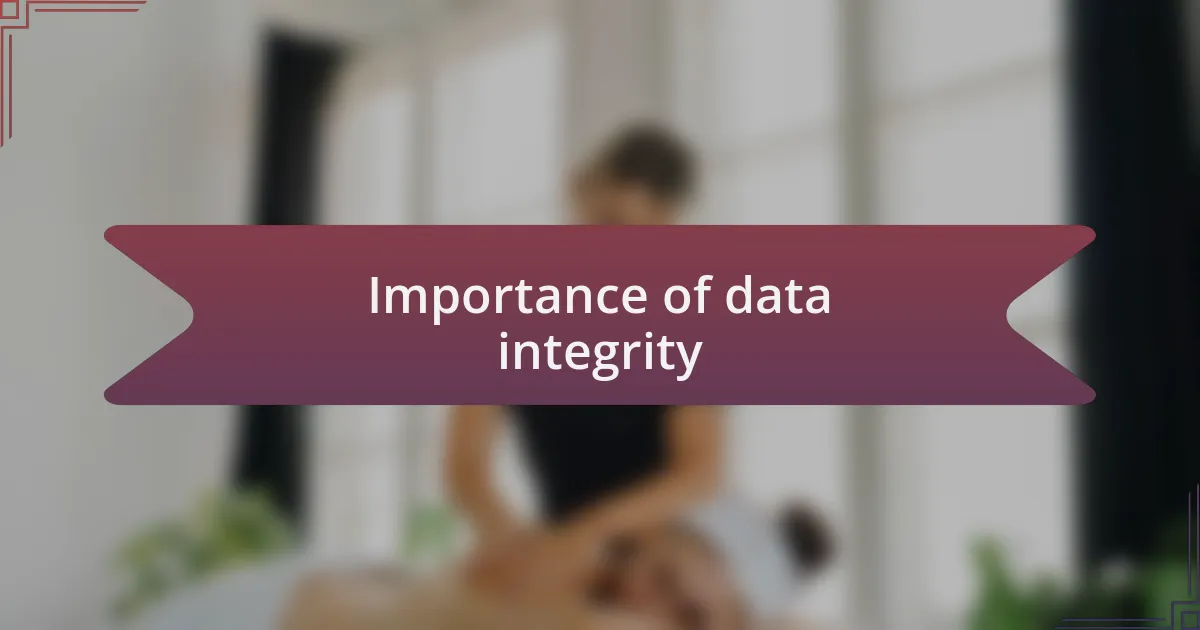
Importance of data integrity
Data integrity is essential because it lays the groundwork for reliable decision-making. I recall a project where incorrect data led to flawed analysis and misinformed business strategies. It struck me then just how critical accurate data is; one wrong number can change everything, affecting not just outcomes but stakeholder trust as well.
In another instance, while developing an e-commerce platform, we faced a potential data breach. The thought of customers’ information being exposed was unsettling. It was a wake-up call that underscored the importance of data integrity—not just ensuring data is unaltered, but also protecting it against unauthorized access. How would you feel if your personal data was mishandled?
Moreover, these experiences have taught me that maintaining data integrity fosters a culture of accountability. It inspires all team members to take ownership of their contributions and minimizes the risk of errors. I remember the relief I felt after implementing a comprehensive data management strategy. It transformed our approach, allowing us to build robust systems that our users could trust deeply.
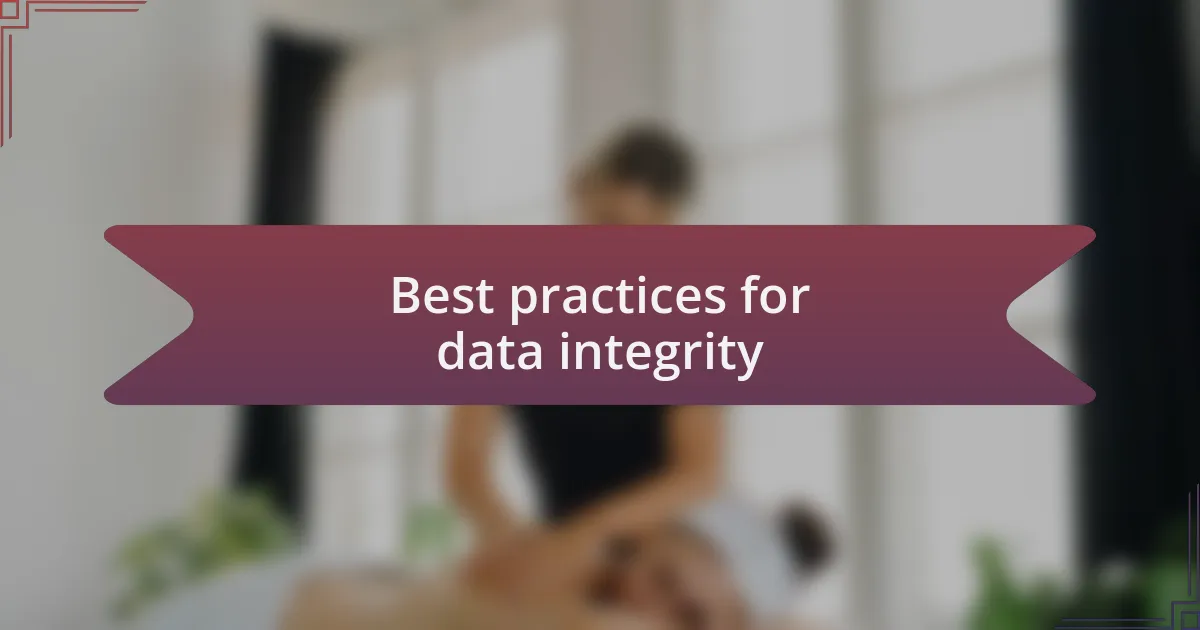
Best practices for data integrity
Ensuring data integrity starts with implementing proper validation checks. I vividly remember a situation where our input forms allowed users to enter invalid characters, leading to data corruption. By introducing strict validation rules, we not only reduced errors but also enhanced user trust. How reassuring is it for users to know that their submissions are handled with care?
Regularly backing up data is another crucial practice. During one development cycle, I lost hours of work due to a server crash. It was a frustrating experience that taught me the hard way how vital backups are. Now, I set up automated backup systems that protect data from unexpected incidents. Imagine the peace of mind that comes from knowing your data is safe and retrievable!
Lastly, I cannot stress enough the importance of consistent audits and monitoring. I’ve seen firsthand how periodic checks can catch discrepancies before they escalate into major problems. This practice not only saves time but also reinforces a proactive approach to data management. Have you ever stopped to think how often you check your data for accuracy? Regular audits can maintain that vigilant eye, ensuring integrity remains a top priority.
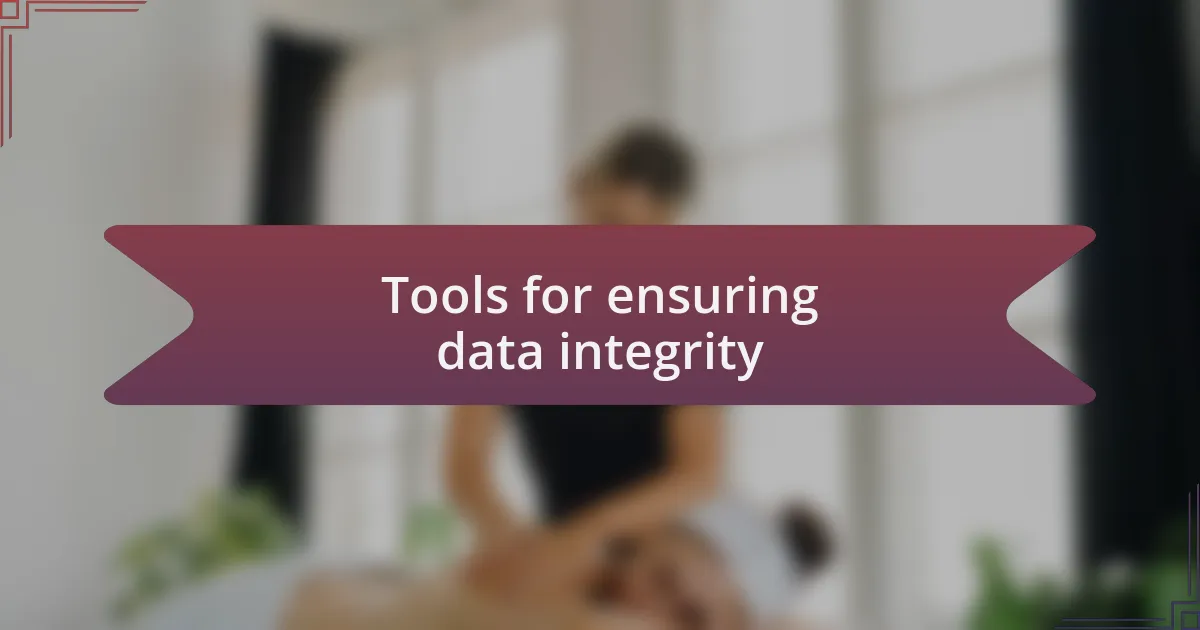
Tools for ensuring data integrity
Utilizing database management systems (DBMS) is one of the most effective strategies for maintaining data integrity. I recall a project where we migrated from a flat-file system to a relational database. The instant improvement in data consistency was astonishing! With features like primary keys and foreign keys, the DBMS prevented invalid data entries. Have you ever experienced the chaos of mismatched records? It’s a remedy I wish I had discovered sooner.
Employing tools for data validation at the application level is equally crucial. I once worked on an application that integrated third-party APIs, and their unpredictable data formats almost derailed our project. By implementing schema validation using JSON schema, we ensured that incoming data adhered to our specifications. It creates a solid defense against unreliable inputs. Can you imagine how much smoother your development process would be if you could trust that incoming data was clean?
Finally, considering version control systems like Git can significantly boost data integrity in collaborative environments. I remember a time when multiple developers were working on the same project, and conflicting changes led to a massive headache. Adopting version control enabled us to track changes meticulously and revert to stable versions when necessary. Thank goodness for that safety net! Doesn’t it feel good to know you have a reliable way to manage changes and maintain data integrity amidst collaboration?
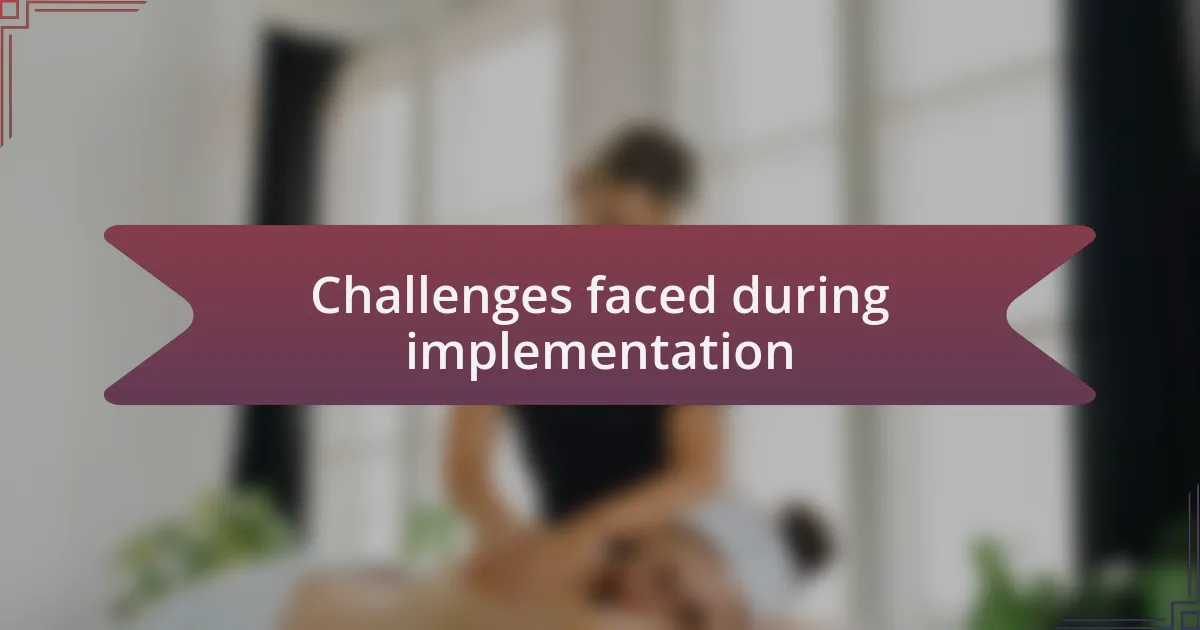
Challenges faced during implementation
Transitioning to robust systems for data integrity often comes with its own set of hurdles. In a project I worked on, we faced significant resistance from the team when moving to a more complex DBMS. It was tough to shift mindsets, especially for those accustomed to older, simpler processes. Have you ever tried convincing a team to adopt new tools? It requires patience and persistence.
Another challenge is ensuring comprehensive data validation throughout the development lifecycle. While I was integrating multiple APIs, I quickly learned that even minor discrepancies in data formats could lead to major disruptions. There was one moment when I overlooked a simple data type mismatch, and it resulted in hours of debugging. How do you ensure that every piece of data aligns perfectly? You must constantly reinforce validation practices and be prepared for the unexpected.
Additionally, collaborating within a team can introduce complications, especially when different members have varying levels of expertise with the tools at hand. During one project, I saw firsthand how miscommunication about data integrity processes led to inconsistent results. It felt overwhelming to navigate those complexities. Have you faced similar situations where different approaches clashed? It reminded me that ongoing education and clear communication are essential in overcoming such challenges.

Lessons learned from my experience
Reflecting on my journey, one crucial lesson has been the importance of thorough documentation. I remember one instance where a lack of clear guidelines resulted in confusion about data handling protocols among team members. It was frustrating to watch it unfold, especially when a simple reference could have saved us hours of backtracking. Why is it that we often underestimate the power of documentation? It truly acts as a foundation for successful implementation.
Another vital insight emerged from the necessity of fostering a culture of accountability within the team. Early in my career, I noticed challenges arose when no one wanted to take ownership of data discrepancies. The turning point came when we implemented regular check-ins, encouraging team members to discuss their roles openly. Have you ever experienced a project stall because no one was willing to admit mistakes? I found that encouraging accountability not only improved our workflow but also strengthened trust among team members.
Lastly, I’ve learned the value of embracing feedback. In one project, I had to confront my initial reluctance to alter a system design based on user feedback. The awkwardness of being challenged was uncomfortable, but I eventually realized that it led to a more user-friendly product. How can we truly improve if we’re not open to other perspectives? This experience taught me that constructive criticism is an opportunity for growth, not a setback.